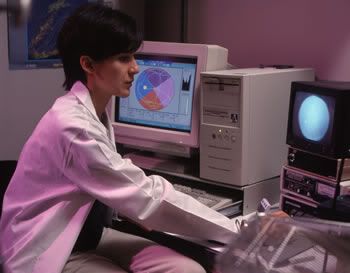What’s the use?.
I am beginning to take myself seriously. This is dangerous when it happens, and it is to be discouraged. It leads one’s thinking on unexpected paths, usually deeper into the forest with nary a breadcrumb to be seen. I was contemplating the Humanities section and wondering whether it had a Greater Purpose. After some reflection (no pun intended), I concluded that it did, but I will come to that later.
If you are going to read any further, you will have to put up with a certain amount of philosophizing. I am quite aware that the boundary between philosophy and pontification is tissue-paper-thin and is breached more often in the direction of the latter. If anyone is interested, the word pontification reveals a lot about human behavior. Pontifax is not the name of a town in southern Maryland, but the title given by the Romans to a high priest. Those of you with a classical education will know that it is derived from “pons” and “facere,” indicating someone who makes bridges, presumably between the Almighty and the population. The word, of course, is the origin of pontiff. Pontification originally had a simple meaning: fulfilling the functions of a bishop. However, over the centuries it came to mean speaking in a pompous and dogmatic manner. I know this because I looked it up in the O.E.D.
You will be aware that the last paragraph is pure pontification. I cannot judge whether what follows is philosophy or not.
I suppose all of us at some time or other have been faced with the question, What is a neurologist? There is no short answer. To say that a neurologist is a physician who studies the nervous system is about as informative as saying that a human is a mammalian biped: accurate, but incomplete. One can learn about humans collectively by looking at the evidence of their activities, such as paintings, music, wars, pollution, cathedrals, the thumbscrew and so on. One can look at them individually by watching their interaction with other members of the species. Is it possible to look at neurologists in the same way? Do we have a collective consciousness? Are we the Borg, so to speak? Are residents and medical students assimilated during their training so that they think and behave as neurologists? There is almost no way to find out. Reading the neurological journals is not very revealing. It tells us about neurology, but not about neurologists.
One thing is self-evident: neurologists are steeped in their profession. Their lives, in general and in detail, run courses different from many others. This is not self-congratulatory, just an observation. When they write creatively, no matter what the topic, they write from a background of neurology. Neurology colors their perspective. It lies behind the piece like a hanging tapestry behind a festive table. It is there; it sets the atmosphere even though nobody is really aware of it. Every piece submitted to “Reflections” says something about neurology and neurologists that it did not intend to say. The pieces in “Reflections,” if one reads them carefully, actually tell a story about “us” that is hidden behind the narratives. Attitudes, states of mind, prejudices, and posturing cannot help but creep into anyone’s writing. I was halfway through writing this piece when I realized that part of the time I was referring to neurologists as “us” and part of the time as “them,” an unconscious reflection of my own ambivalence.
The neurologists who publish in “Reflections” are not professional writers who have had to submit to the rigors of the commercial publishing houses. “Reflections” is the forum for ordinary neurologists, although some of the submissions are far from ordinary. It would be interesting to publish everything that is submitted, but that would be undesirable. Any submission to this section has to be peer-reviewed by other neurologists. We are so used to peer review. It is part of our nature in the scientific arena and vital to our integrity. Think, for a moment, about the process. Dr. X submits a paper stating, “Here is Important Fact Y.” Dr. Z, the expert reviewer, says, “We’ll see about that!” and proceeds to pick it apart. If he cannot do so, he writes a favorable review and the paper is published. It is a boxing match with the gloves off.
Now consider the creative neurologist who struggles to put something on paper, something meaningful to the writer. The offering is a tender shoot. Whether it will grow into something substantial later depends how it is nurtured. If the Red Queen shouts “Off with its head,” there will be no follow-up and no improvement. We should try to get reviewers to look at these offerings sympathetically as noncombatants, particularly for first-time submissions. Those who have already published several times in these columns may be judged more strictly. This does not imply accepting everything that comes down the Pike. The journal is not going to publish rubbish, but a skillful reviewer can find the gold amid the dross. Once identified, it is up to the writer to fashion it into something worthwhile.
What’s the use? Is this section, which is so tangential to the main purpose of the journal, of sufficient use to justify the precious space afforded to it? Does it indeed have a Greater Purpose? There is a difference between the academic neurologists and the “practicing” neurologists, who make up the majority of our profession, in the way they read the journal. Academic neurologists tend to read in detail the scientific papers that are of interest to them. An informal survey of something under 100 practicing neurologists (two, actually) suggests that they read the “Highlights,” the abstracts of articles that catch their attention, and “Reflections.” I have also received a few e-mails from readers of the journal who tell me that they turn to the Humanities section each month, just to see what is there. Sometimes they find it wonderful, sometimes it is irritating, sometimes it strikes a chord in their own lives, and sometimes it is boring. If this is a general phenomenon, it means that neurologists are being touched by a part of our specialty that has been dormant. They are beginning to realize that, in addition to “the neurologist as a clinician/scientist,” this section of the journal provides them with access to “the neurologist as a person.” Many had never thought of this before. I believe that this humanization is important for our specialty.
“Reflections” provides a window into the soul of neurology, unlike any other. It is a section that can teach neurologists about themselves and lead to a self-awareness in the specialty that no classroom or conference can provide. If in future years, people want to learn about neurologists, as opposed to neurology, they could do worse than scan the collection of articles in the Humanities section. That is the Greater Purpose.




0 Comments:
Post a Comment
<< Home